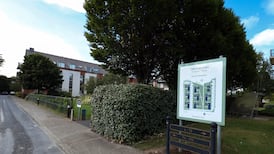Bob TisdallBob Tisdall, who has died in Brisbane at the age of 97, will be recalled as one of the great romantic figures of Irish sport who, at Los Angeles in 1932, stood logic on its head with his victory in the Olympic 400 metres championship.
Tisdall, a mere novice by accepted international standards, whose enthusiasm easily outstripped his expertise in the early phase of his career, demanded worldwide acclaim for the manner in which he won the gold medal in one of the more punishing of the Olympic track events.
To the astonishment of all, the 25-year-old Irishman, with just four hurdles races on his CV before setting down in California, produced the fastest-ever time for the event when winning in 51.7 seconds.
Unfortunately, he knocked the last hurdle which, under the rules of the day, precluded him from claiming a world record but, along with Dr Pat O'Callaghan and Ronnie Delany, he remains the only Irishman to win an Olympic title in track and field competition.
Robert Morton Newburgh Tisdall was born in Ceylon, now Sri Lanka, in 1907, to parents intensely proud of their Irish origins.
His father, William, hailed from Bantry and his mother, Meta Morton, grew up in Nenagh. Appropriately, it was in Nenagh, and later Dromineer, that the young Robert spent his formative years.
Not until he arrived at Cambridge University did he have the opportunity of indulging his passion for sport, and college records show that in the annual 'colours' match with Oxford in 1931 he won four events, the 440 yards, 120 yards hurdles, shot-putt and long jump competitions.
The winning figures in each instance were, however, far from inspiring. And outside intervarsity sport he remained largely unknown here until early in 1932 when he wrote to Gen Eoin O'Duffy, president of the Irish Olympic Council, requesting that he be selected for the Irish team going to the Los Angeles Games.
O'Duffy later recalled that he was both astounded and impressed by the "cheek" of the young graduate, the moreso since Tisdall indicated that he wished to compete in the 400 metres hurdles, an event in which, on his own admission, he had competed just once.
O'Duffy responded by inviting him to participate in a trial race in Dublin. And Tisdall's reaction to that show of faith was no less brave. Although recently married, he promptly resigned his job in London and took himself off to an orchard in Sussex where, in a disused railway carriage, he worked on honing his body for the biggest test of his career. Without even the semblance of a track, he trained on home-made hurdles.
O'Duffy decreed that he would have to run the trial in Croke Park in 55 seconds or less, the time recorded by the American Johnny Gibson in the Tailteann Games at the same venue four years earlier, and arranged for Andy Nolan, a member of the Garda club, to run against him.
The best Tisdall could do on the day was 56.2 seconds, and he left the stadium deeply disillusioned. But O'Duffy's admiration for the sheer effrontery of the man persisted, and he arranged for another trial to be held in conjunction with the Irish championships.
Tisdall once more retired to his railway carriage, and his efforts paid off. With Nolan again in opposition, he raced around Croke Park in 54.2 seconds, and suddenly Los Angeles beckoned.
He set off with the Irish team on July 3rd for the 14-day land and sea journey to California, arriving at the Olympic village in the Baldwin Hills overlooking Los Angeles in a state of near-exhaustion. The remaining 14 days of his preparation for the Olympic Games were odd - and distinctly worrying for Gen O'Duffy.
He spent most of his time in bed and, when he was not sleeping or resting in his room, he was invariably stretched out in the sun.
The men of little faith - and by now O'Duffy had probably joined them - could scarcely believe their eyes, however, when on Sunday, July 1st, Tisdall won his heat in 54.8 seconds and two hours later moved into world class by winning the second semi-final in 52.8 seconds.
That equalled the Olympic record which the American Glen "Slats" Hardin had established in the first semi-final - and the Irishman celebrated, by going back to bed.
Joining Tisdall on the starting line for the final was the finest group of hurdlers ever assembled at this level. In addition to Hardin, he had to cope with the 1924 Olympic champion, Morgan Taylor (US), Lord David Burghley, later the Marquis of Exeter, who had won the 1928 title for Britain, and the respective champions of Italy and Sweden, Luigi Facelli and Kellgren Areskoug.
Undaunted, Tisdall rose to the first of the 10 obstacles in the lead. Thereafter the gap gradually increased, and later he would recall that when he got to the last obstacle he was so far ahead that the feeling was unreal.
"I experienced a strange sense of loneliness and began to wonder if the others had fallen over," he said.
It was probably that momentary lapse in concentration that caused him to knock the hurdle, an error which cost him the chance of claiming the world record. But in very other respect it had been an exemplary exercise in the art of the improbable.
And on this occasion Tisdall did not retire to bed after being presented with his gold medal, which was just as well, for his friend, Pat O'Callaghan, was due in the hammer-throwing circle 50 minutes later to defend the title he had won in Amsterdam in 1928.
In the preliminary round of the competition O'Callaghan discovered that the spikes on his shoes were much too long for the hard surface of the Olympic circle, and for a while he looked on the brink of elimination.
But he summoned a groundsman and a nail file. Then, with Tisdall's help, he began the painstaking job of filing down the spikes, holding on to his title for his pains.
Later in the week, Tisdall returned to the Coliseum to compete in the decathlon and set an Olympic record for the event with a 400 metres time of 49 seconds, finishing in eighth place in the competition. O'Callaghan and Tisdall returned with their two golds to a hero's reception in Dublin.
Less than a year later, however, Tisdall was off on his travels again, this time to live in South Africa where he remained until 1939.
After seeing service in the second World War, he returned to Ireland briefly in 1946 but was unable to settle. Soon afterwards, he emigrated to Australia to live in Nambour outside Brisbane.
Yet his love affair with Ireland never diminished and he returned occasionally to relive old glories with Pat O'Callaghan, who predeceased him in 1991.
He is survived by his wife, Peggy, and two daughters, Sally Anne and Nena. A grand nephew, Peter Hooker, lives in Dromineer.
Robert Tisdall: born May 16th, 1907; died July 28th, 2004









